The best shoes for walking should offer comfort, support, and a proper fit. Look for features like cushioned insoles, flexible midsoles, breathable uppers, and a roomy toe box. Lightweight design and good traction are also important. Shoes with a low heel-to-toe drop are ideal for a natural stride. These elements help prevent injuries and ensure a comfortable walking experience.
Sporting brands make specific shoes for physical activities like running, walking, rock climbing, cross-training, and weight lifting.
Further, each shoe type and model retails with unique materials, styles, designs, comfort levels, flexibility, fit, and price points to cater to different workout conditions and customer preferences.
Such a vast array of options can overwhelm even the most knowledgeable shopper.
In this detailed guide, we narrow our focus and help you pinpoint the best types of shoes for walking. For a better analysis, we present a detailed comparison of the traits and benefits of walking shoes against those for running, trail, and walking sandals.
As a rule of thumb, ensure you wear soft and comfortable shoes to facilitate the correct walking technique if you like taking casual or fitness walks.
Such shoes protect your feet from hard impact, keep you comfortable in any weather, and prevent injuries or the development of specific foot conditions.
Similarly, if you are an athlete, invest in proper running shoes for speed, performance, and safety. Unlike walking shoes, most running shoes must adhere to set standards. They feature unique designs for support, comfort, and motion control.
Moreover, unlike hiking shoes designed for walking in varied terrains, trail running shoes aim to optimize your agility in unstable environments. Running shoes opt for the most durable materials to tackle the road, trail, and cross country.
And, since trail running shoes cater to the harshest running conditions, our guide shall also include a detailed discussion for an informed buying decision.
Finally, we shall explore walking sandals, the must-have footwear for outdoor excursions and running short errands.
These comfortable and stylish sandals opt for an open design to keep your feet aerated while supporting them in varying outdoor terrain. And they retail in trendy designs to suit most fashion statements.
So, what shoes are most suitable for walking?
Let’s get into the guide!
Walking Shoes
If you have a busy lifestyle, it is wise to incorporate regular walks between your packed schedules to stay fit. Daily brisk walks of up to 30 minutes can improve your mental and physical health to keep the doctor away.
Think of stronger bones, muscle endurance and power, pain relief, and a healthier heart. Whether you enjoy a timed fitness walk or a casual forest bath, you can do so indoors and outdoors without prior training or special equipment. But you must get your footwear right.
Features of a Walking Shoe
Walking shoes support your feet, keep you comfortable, and protect them on the terrain. They have an ergonomic design comprising the following features: –
1. Uppers
Most walking shoes opt for uppers with a breathable mesh or synthetic fabric for optimal ventilation. Still, other sporting brands use durable leather uppers to increase the weight and stabilize the feet. Such stylish leather is also excellent for casual walks in the city.
2. Insole
Underneath the uppers are removable sole inserts cushioning the pressure points from harsh impact. Likewise, the inserts create the necessary arch support for a natural walking gait. Besides, walkers can use or remove the insoles to prevent excessive pronation. And they are easy to clean and dry fast for convenient use.
3. Midsole
Sporting brands make walking shoes with air mesh, foam, or gel midsoles. The midsole cushions feet against vibrations from the ground. More so, they are installed permanently in the shoes with a thicker frame than insoles to give the shoe its structure.
4. Outsole
The outsole is at the bottom of the walking shoes touching the ground. Since most people use walking shoes along smooth paths, their outsoles have more forgiving grooves and tread patterns to guarantee traction without eroding the pathways.
5. Toe Box
Now, walking shoes prioritize comfort and support. Hence, they feature a roomy toe box to accommodate toes of varying width and length. The section protects feet from specific foot conditions like hammertoes, calluses, and bunions.
6. Heel Collar
Walking shoes feature heel collars for locking the shoe around the heel and cushioning the ankle for a proper fit. That way, you can walk long distances without your feet slipping inside the shoe.
And, there is less or no friction to the Achilles tendon, protecting you from injury. Some walking shoes also substitute the heel collar with an Achilles tendon protector.
What to Look for In The Best Walking Shoes for You
Picking a good walking shoe can make the difference between staying comfortable, supported, and meeting your walking fitness goals and struggling with ill-fitting shoes that trigger feet and joint pain or hinder your performance on the road.
Below is a checklist of what you should consider when selecting the best shoes for walking: –
1. Your Walking Style
Do you swing or sway when walking? Understand your walking style and buy walking shoes that facilitate a natural stride as follows: –
- Steady Walking – If you live a docile lifestyle and most of your walking is indoors or around your house, your walking shoes will have the standard features catering to a steady pace.
- Brisk Walking – Brisk walkers cover an average of 100 steps per minute. It is faster than a steady walk, requiring lightweight shoes with ample cushioning.
- Power Walking, Race Walking, Marathon Walking, & Nordic Walking – A power walk is a form of aerobic exercise reaching speeds of up to 9 km/hr.
- It is similar to a race and marathon walk where athletes move at fast speeds with one foot maintaining contact with the ground at all times. Consequently, the athletes wear low-profile, lightweight, and flexible shoes.
- Their walking shoes have midsoles with angled foam components to divert vertical energy to a horizontal motion. That way, they reach maximum walking speeds with minimal vertical motion.
- Chi Walking – Chi walking is an oriental martial arts technique incorporating cardio, aerobic, flexibility, loosening, meditation, and energizing walking. The walk aims to improve your body posture, loosen joints, relax your arm and leg muscles, and engage your core muscles.
- Athletes can wear walking shoes with leather or rubber outsoles for traction and smooth pivoting.
- Nordic Walking – Nordic walking is a holistic exercise where athletes walk with Nordic poles, walking with poles to engage their upper body muscles as well.
- Unlike regular walks with only muscles below the waist activated, Nordic poles provide a vigorous muscle workout for your shoulders, arms, and core.
- And athletes can use a high or low-heel walking shoe as long as it has ample padding, a secure heel, and a robust sole to adapt to different surfaces.
2. Proper Fit
Your walking shoes should have a snug fit. A proper fit depends on your foot characteristics and the shoes’ lateral support, flexibility, heel-to-toe drop, weight, and cushioning.
More so, most walking shoes are larger than running shoes.
You also need to analyze your foot characteristics to determine your correct shoe size and width. For example, if you have high-arched feet, opt for walking shoes with generous ankle support, a roomy toe box, and a flexible and well-cushioned midfoot.
On the contrary, persons with flat feet should wear walking shoes with a wider ball of the foot. Also, these shoes should have a supportive midfoot to minimize discomfort from collapsed arches.
If you are unsure about your foot characteristics, consult a podiatrist at your favorite sporting goods store. And, if you are healing from injury or surgery, seek a doctor’s opinion before buying your next walking shoes.
Secondly, there should be at least a finger’s width of free space between the shoe and your longest toe. Such a spacious toe box creates plenty of room to wiggle your toes. If you plan to wear socks, have them on when sizing the walking shoes.
Your ideal walking shoes should have ample cushion and traction to stabilize your feet, improve your ground grip, and minimize the stress on your feet due to your body weight. Try bending or twisting the shoes to confirm if it is flexible enough to facilitate a natural stride.
They should flex with ease. Otherwise, you risk developing foot problems like shin pain and numb toes.
Finally, unless you are preparing for a Nordic walk, your choice of walking shoes should have a low heel-to-toe drop. When we walk, our heels strike the ground first.
A low heel will facilitate the rolling of the feet while keeping you stable on any surface. In contrast, anyone walking in shoes with big flared heels may experience annoying dragging and catching of the heel on the ground.
3. Lightweight Design
Walking shoes should be lightweight to facilitate any walking style. This weight decreases further as you opt for faster walking styles or longer walking routines.
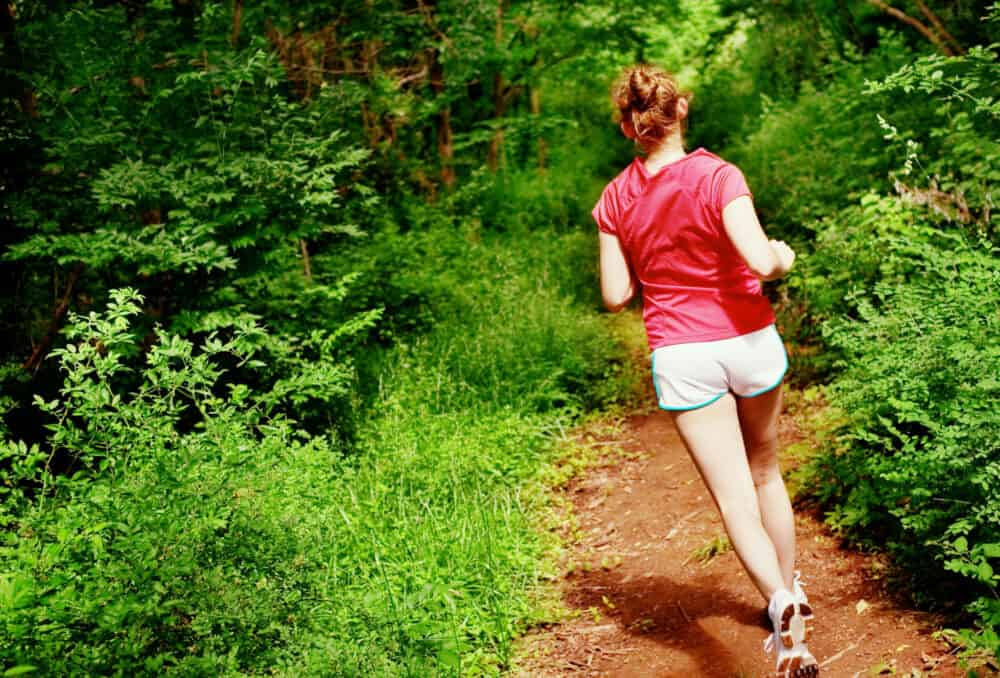
Running Shoes
Running shoes prioritize flexibility, support, cushioning, and shock absorption. Running is a high-impact activity whereby both feet shall be in the air numerous times.
Hence, the ideal shoes should have a robust and lightweight design to facilitate controlled vertical motion, speed, and performance.
Anatomy of Running Shoes
Running shoes support your feet, keep you comfortable, and protect you from the elements. They have an ergonomic design comprising the following features: –
1. Uppers
Running shoes opt for a durable air mesh, knit, fabric, or leather material for their uppers. The breathable fabric protects the feet from the elements, keeps them dry and cool, and creates a seamless design for ultimate performance.
Unlike other footwear, running shoe uppers have numerous functional components like a separate tongue, vamp, toe box, quarter panel, heel tab, heel collar, eyelet, laces, lace garage, aglet, and a sock liner. The ergonomic design of each section varies depending on the intended running style.
2. Midsole
The core of running shoes is at the midsole.
This critical component guarantees optimal energy return and cushioning when running. In turn, it comprises such materials as foam, gel, and airbags to stabilize the stride and keep the shoe lightweight and flexible when running.
Also, running shoes opt for intricate cushioning technologies in their midsoles. The most popular cushioning technologies for running shoes include the weatherized ADIDAS Boost Technology, supportive ASICS GEL™ Technology, and the pressurized air NIKE ZOOM Technology.
3. Heel Drop & Stack Height
Athletes measure the thickness of the heel in terms of heel drop. It varies between 6 mm and 13 mm in running shoes to create a thick platform for better cushioning and stability. If you are a recreational runner who prefers well-cushioned running shoes, ensure they have an acceptable stack height.
Stack height is the thickness of the components between the foot and the ground. It determines how high the foot stays elevated above the ground when you run. In turn, running shoes with a significant stack height have thicker cushioning materials and vice versa.
And running shoes can have a stack height of up to 30 mm without compromising performance.
4. Outsole
The outsole is the bottom-most part of running shoes. And, since most recreational and elite runners are rearfoot strikers, they use running shoes with a more aggressive tread pattern and deeper flex grooves at the outsole.
The design guarantees traction when tackling vast and uneven terrains and complements the midsole in securing a motion-controlled stride. Most running shoes opt for carbon rubber or compound outsoles for durability.
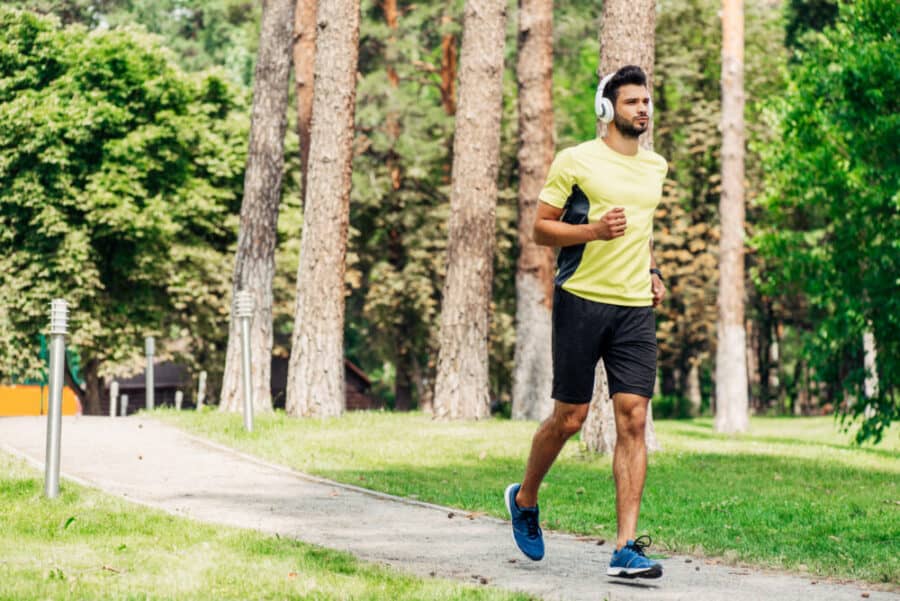
What to Look for in the Best Running Shoes
1. Running Technique
Do you land on your heels first when running? If so, opt for running shoes with a high heel-to-toe drop of up to 13 mm. In contrast, if you are a midfoot striker, wear running shoes with a heel-to-toe drop between 9 mm and 12 mm.
And runners who land on the front of their feet should opt for running shoes with a low heel-to-toe drop of up to 6 mm.
2. Lightweight Yet Supportive Design
Most running shoes weigh between 6.5 lbs and 13.5 lbs. Still, the best racing or tracking shoes should have a lightweight and supportive construction of fewer than 8 lbs.
At this weight, there is a minimal drag on the feet, allowing the athlete to use optimal energy in achieving faster speeds and covering longer distances. One easy way to gauge the overall weight of your running shoes is by counting the number of fixed components.
Likewise, you can alter the weight of heavier running shoes with detachable segments to your liking.
3. Durability
Most sporting brands make running shoes to last up to 500 miles on varying terrains. This lifespan varies depending on the installed durable components.
For example, shoes using more flexible uppers last longer than those with stiffer ones. And softer PU midsoles outlive firmer EVA ones. Other robust elements include rubber outsoles, weatherized foam uppers, and rubberized lacing panels.
4. Cushioning & Impact Distribution
Running shoes have strategic cushioning zones at the forefoot, midfoot, and heel. Each zone redistributes shock to create a smooth and cozy landing for athletes with varying foot strikes.
In turn, the athlete can attain the fastest speeds on any terrain without worrying about hurting their feet or developing joint pains.
5. Support and Stability
Finally, sporting brands make running shoes with varying arch support and stability. They facilitate an upright posture ideal for rotating feet while in a vertical motion. Likewise, they balance the stride to prevent overpronation, pain, and injuries.
Trail Shoes
Trail running and walking present unique challenges to the athlete. The athlete traverses uneven roads, paths, mountain areas, forests, and the backcountry.
They hit rocks, roots, and debris, step onto the sand, and slip on mud and rainwater pools. The harsh trails call for footwear with durable components to withstand the elements and minimize excessive foot rotations.
Trail shoes are rugged footwear for walking or running on uneven and challenging surfaces. They opt for durable components to protect the athlete from the elements.
What Makes Trail Shoes Unique?
Trail shoes are your go-to footwear for optimal traction, stability, and protection when walking or running on rugged terrain. Their ergonomic construction differs from road running shoes and hiking boots as follows: –
1. Protection
The average weight of trail shoes is between that of running shoes and hiking boots. It is a lightweight design with reinforcing components at the uppers, midsole, and outsole.
For example, most sporting brands add synthetic overlays on the uppers, shielding the toes, heels, and sides from shock and objects that may pock and penetrate the shoe.
Likewise, trail shoes opt for stiffer midsoles, with some brands adding rock plates to create a solid barrier against rocks, debris, and sticks. And these shoes have beefier outsoles for better traction and withstand extreme abrasion and tears.
2. Support and Stability
The generous reinforcements on trail shoes create a stable and responsive midsole platform. These thinner and much denser midsoles facilitate quick maneuvers on bumpy strides. Moreover, they lie much lower toward the ground promoting better foot placement, motion control, and snug fit.
Now most workout footwear focuses on a specific cushioning technique. In contrast, trail shoes retail in diverse cushioning options, ranging from barefoot to maximum padding. This approach guarantees a suitable trail shoe for everyone regardless of their type of trail.
3. Traction
Traction is a critical trait in trail shoes. Athletes use their trail shoes on unforgiving, inconsistent, and unstable terrain. Hence, they need shoes with maximum grip. Trail shoes use rugged rubber outsoles with deeper lugs and multidirectional patterns.
The outsoles remain stable on slippery ground, last longer despite the harsh handling, and prevent rocks, roots, and debris from penetrating into the shoe.
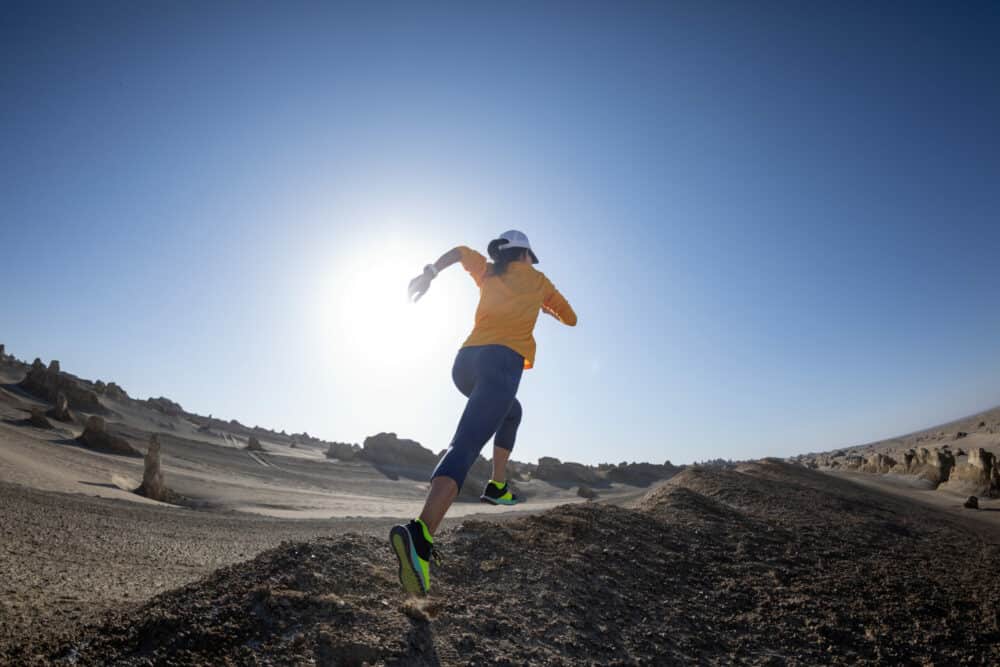
How Do You Select the Best Trail Shoes?
1. Type of Trail
Pick trail shoes depending on where you intend to walk or run. When tackling light trails, opt for lightweight trail shoes with modest protection uppers, moderately stiff midsoles, and outsoles with shallow lugs.
This pick facilitates a stable foot placement, blocks roots and rocks, has better traction on loose soil, and has lightweight and optimal cushioning for a brisk pace.
In contrast, select trail shoes with resilient uppers, stiff midsoles, and aggressive outsoles for your off-trail adventuring. These stout shoes will get you through the toughest terrain, protecting and warming your feet in bad weather.
2. Heel to Toe Drop
Most trail shoes have a heel-to-toe drop of between zero and 12 mm.
Here, the barefoot and minimalistic trail shoes have a 0-4 mm heel drop facilitating the forefoot and heel sections to touch the ground consecutively. Regular trail shoes have a heel-to-toe depth of 5-7 mm, ideal for long trail walks.
And trail shoes have the highest heel drop of between 8 mm and 12 mm for road running. We also recommend opting for trail shoes with the same heel-to-toe drop as your current running shoes.
3. Built-in Foot Protection
Finally, asses the in-built reinforcements in your choice trail shoes. Opt for trail shoes with toe guards and rock plates to safeguard your feet from sharp rocks, twigs, and debris along beaten trails.
Other in-built reinforcements ideal for off-road running include side overlays for barefoot trail shoes and weatherized uppers for extreme weather.
Walking Sandals
Finally, walking sandals, also referred to as trail sandals, are your go-to shoes for short strolls to the beach, at home, on a picnic, or at the local grocery store. These are a favorite casual footwear for persons in warmer climates.
And unlike trail shoes, walking shoes, and running shoes, you can wear walking sandals with or without socks and accessorize them to complement your attire for the day.
Standard Features of Walking Sandals
Now, there are vast walking sandals designs from all around the globe.
These include Waraji straw sandals from Japan, India’s Paduka toe-knob sandals, Huarache walking sandals from Mexico, and the extremely durable Ojota sandals from Peruvia.
Still, if you are a fitness walker, ensure your walking sandals have at least a sole, insole, midsole, and sabot strap or sandal. Some walking sandals include a heel, heel strap, and other accessories.
The sole in walking sandals is a lightweight block of varying thickness depending on your taste and preferences. However, it must create ample cushioning to protect your feet from sharp objects and hard impacts.
A sabot strap, sandal, or lace passes through the first and second toe to hold the feet to the sole of the walking sandals.
Walking Sandals vs. Flip Flops
The notable difference between walking sandals and flip-flops is in the cushioning. As the name suggests, flip-flops have a thin sole that makes a flopping or snapping sound as you walk.
In contrast, walking sandals have moderate soles that are silent on most terrain. Also, some walking sandals add a thin heel at the sole or a heel encircling strap to hold feet firmly on the sole and minimize friction and discomfort.
What are the Benefits of Wearing Walking Sandals?
Here are the four top reasons that make walking sandals a favorite choice for many outdoor enthusiasts:
1. Optimal Ventilation
Walking sandals have an open design for optimal ventilation. Hence, they are excellent for fitness walkers in hot and humid environments. Your feet stay cool and dry over long walks. On the downside, these shoes will not shield you from dust, debris, and tree branches along the trail.
2. Durability
Walking shoes use robust rubber soles, tear-resistant tire treads, and quick-drying EVA foam midsole and insoles. These wear-resistant components give you value for your money.
3. Versatility
The simplistic design of most walking sandals makes them adaptable to the athlete’s needs and walking conditions. For example, a fitness walker can opt for walking sandals with thick soles to cushion and support their feet from injury, fatigue, and stress.
Likewise, you can get walking sandals in vast materials like leather, rubber, rope, and even wood. Plus, it is easy to fold and pack walking sandals to minimize luggage size and weight when traveling. Use these sandals to walk on flat urban roads and tracks with minimal dust or poking objects.
4. Stylish
You can get your favorite walking sandals in vast stylish options. These include gladiator sandals whose interlaced straps firmly hold your toes and instep, homemade Ho Chi Minh sandals cut out from tires and other recycled materials, and T-bar sandals popular with fishermen.
Factors to Consider When Buying Walking Sandals
Opt for walking sandals with a comfortable feel and snug fit. Due to their versatility, insist on walking sandals with adjustable straps to secure your feet firmly on the sandals.
Secondly, ensure your walking sandals have the necessary cushioning and support for your type of foot arches. Also, select walking sandals made of durable and breathable materials like leather and mesh.
Conclusion
Today, you’ll be spoilt for choice when shopping for walking shoes. Sporting brands make reliable walking shoes, running shoes, trail shoes, and walking sandals for the diverse needs of athletes.
Still, the ultimate buying decision depends on your walking style, foot characteristics and needs, and walking conditions.
We hope this detailed guide has given you insight into assessing your next walking shoes based on factors like comfort, support, stability, functionality, and durability.
These traits vary depending on your type of foot arches, whether you have a preexisting injury or foot condition, and your fitness goals, if any.
The above-discussed features of walking shoes, running shoes, trail shoes, and walking sandals aim to help you get the appropriate shoes for your needs.
Still, always seek professional advice, especially if you are recovering from an injury or surgery or have an underlying foot condition. Speak to your doctor before buying your next pair of walking shoes.


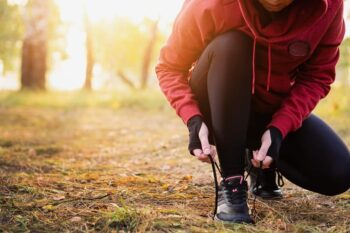
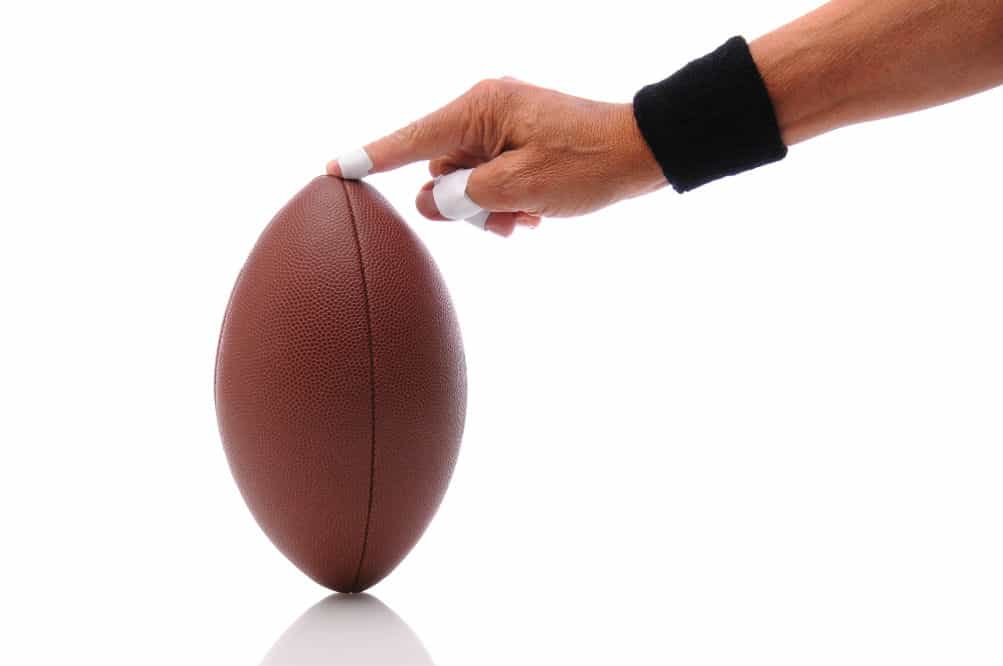

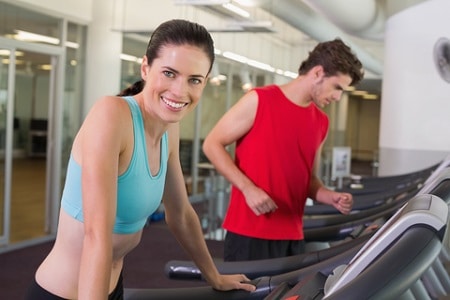
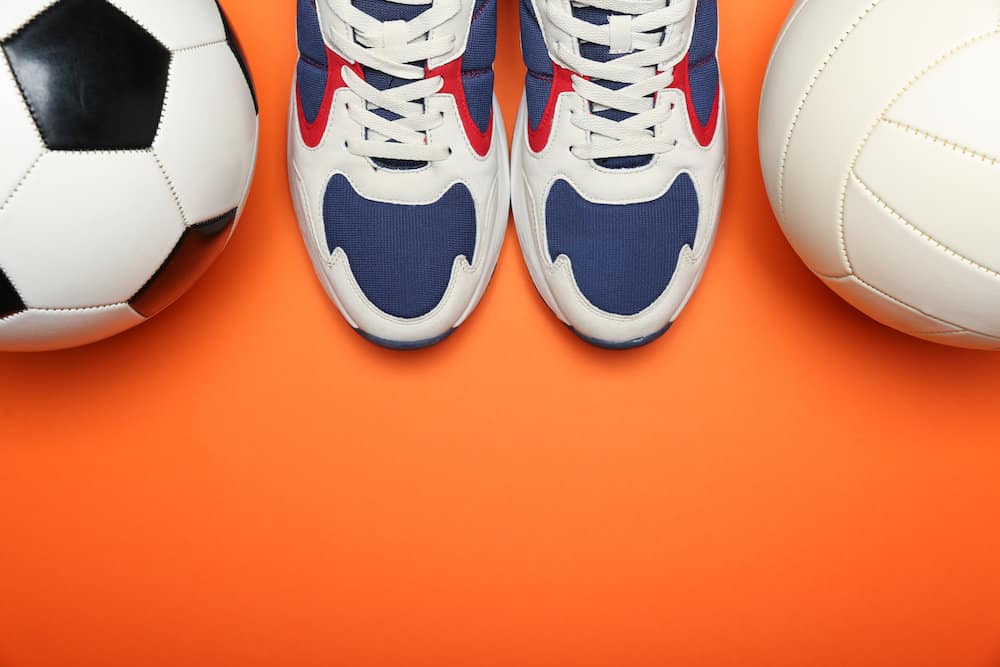
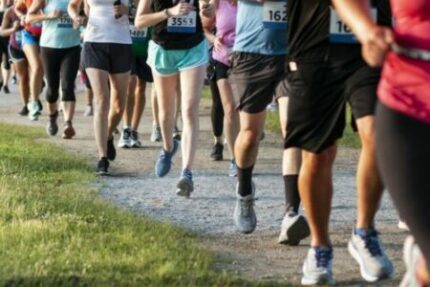






Thank you for this detailed guide on choosing the best shoes for walking. I found the comparison between walking, running, trail, and walking sandals very helpful. I agree that selecting the right footwear is crucial for comfort, support, and preventing injuries during walks. I’ll keep in mind the features to look for in walking shoes, especially the proper fit and lightweight design. Your article has made it much easier for me to make an informed buying decision.
Hi, Jeffrey, and thank you.
Thank you for your kind words.
This post may be useful for you, too, because there are walking shoes recommended by podiatrists—a very interesting article.
Great to hear about the benefit of the article too.
Don’t hesitate to contact me to help you with anything else or if you have any questions.
Wow, this blog post provides a comprehensive guide to choosing the best shoes for walking. It covers various types of footwear, including walking shoes, running shoes, trail shoes, and walking sandals, and highlights their features, benefits, and considerations. I found it incredibly informative and helpful in understanding the differences between these types of shoes.
I have a few questions,
What are some specific brands or models of walking shoes that you would recommend based on the features mentioned in the article?
How do running shoes differ from walking shoes in terms of design and functionality?
Can you provide some examples of popular trail shoes?
Personally, I believe that investing in a good pair of shoes specifically designed for walking is crucial for both comfort and foot health. The article rightly emphasizes the importance of selecting shoes based on your walking style, foot characteristics, and the type of terrain you’ll be walking on. This customized approach ensures that you have the right support, cushioning, and stability for an enjoyable walking experience.
Furthermore, I appreciate the discussion on walking sandals as a versatile option for casual walks or outdoor activities. The article outlines their benefits, such as optimal ventilation, durability, versatility, and style. It’s great to have footwear options that combine comfort and practicality.
I have found that investing in a good pair of walking shoes made a significant difference in my walking routine. I used to experience discomfort and foot fatigue after long walks, but after switching to proper walking shoes with cushioning and arch support, I noticed a considerable improvement in comfort and overall walking experience. I’m curious to hear about other people’s experiences with different types of walking shoes and their impact on their walking routines.
This blog post offers a comprehensive guide covering different shoes for walking, providing valuable information and guidance for selecting the right footwear. It addresses common questions, offers opinions, and encourages discussion about personal experiences with walking shoes. It’s an excellent resource for anyone looking to find the best shoes for their walking needs.
Warm Regards
M.T. Wolf
Hi, Mike, and thank you.
Thank you for your kind words.
About your question about how running shoes differ from walking shoes, we wrote a good article about it some time ago. It is very well explained there. You can see it here.
There are many brands with perfectly good trail running shoes. It is different what is the best for each runner. Things like weight, what their goals are, etc, are all factors.
But here are reviews about some of the best brands, their pros, and coins.
You are absolutely right. It is important to be in a good shoes. But, too, it is crucial to be in shoes that fit you well! Because of that, we have so many reviews and information for all kinds of runners and walkers.
Great to hear about the benefit of the article too.
Thank you for your very kind words.
Don’t hesitate to contact me to help you with anything else or if you have any questions.